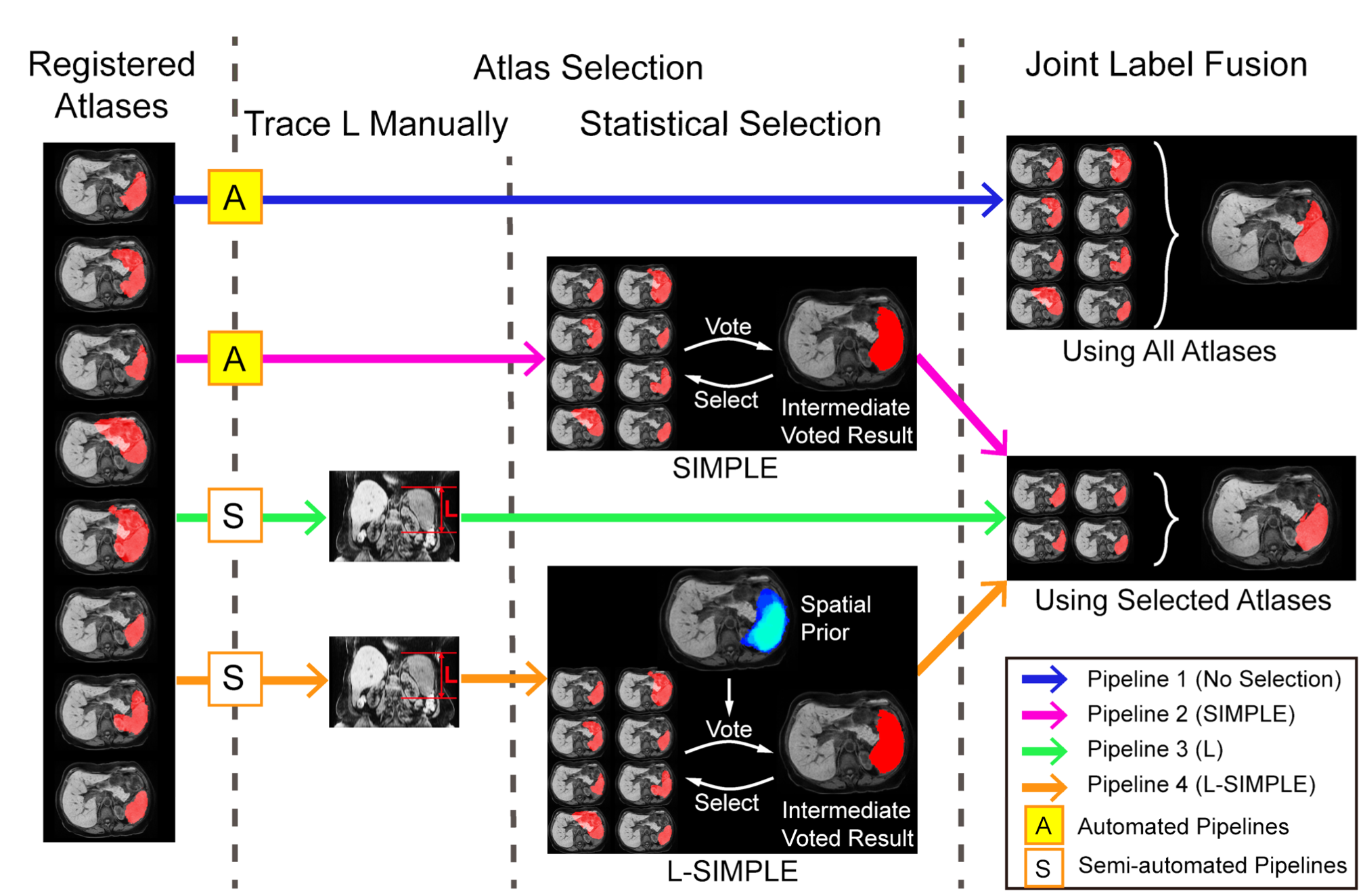Multi-atlas Segmentation Enables Robust Multi-contrast MRI Spleen Segmentation for Splenomegaly
Yuankai Huo, Jiaqi Liu, Zhoubing Xu, Robert L. Harrigan, Albert Assad, Richard G. Abramson, Bennett A. Landman. “Multi-atlas Segmentation Enables Robust Multi-contrast MRI Spleen Segmentation for Splenomegaly” In Proceedings of the SPIE Medical Imaging Conference. Orlando, Florida, February 2017. Oral presentation.
Full Text:
Abstract
Multi-atlas segmentation has shown to be a promising approach for spleen segmentation. To deal with the registration errors between the heterogeneous abdominal CT images, the context learning method for performance level estimation (CLSIMPLE) method was previously proposed. However, the CLSIMPLE typically trains a single GMM from the entire heterogeneous training atlas set. Therefore, the estimated prior maps might not represent specific target images accurately. We propose an adaptive context learning SIMPLE (A-CLSIMPLE) to train the GMM adaptively using subsets of the training data with the subsets tailored for different target images. From the results, A-CLSIMPLE achieved more accurate spleen segmentation.
